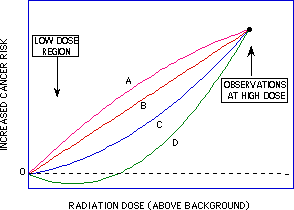Part One of Two Parts:
I have written many posts about nuclear weapons. A great deal of ink is being spilled about the negotiations with Iran over their nuclear program and the possibility that they may develop a nuclear bomb some day. While I think that the deal that has been worked out is a good one and that keeping one more country from acquiring nuclear weapons is a laudable goal, we already have too many nuclear warheads on the planet.
A few nuclear nations such as the UK, France, China, India, Pakistan and Israel possess hundreds of nuclear warheads. It is estimated that the detonation of only a hundred of these warheads could result in a nuclear winter that would end our human civilization. This danger is beyond acceptable.
The U.S. and Russia both have thousands of warheads ready to launch at each other. The warning and launch systems of both countries are aging and deteriorating. While disarmament is being discussed and treaties are being negotiated, both countries are committing to upgrading their nuclear forces. Recently the Russians have been rattling the nuclear saber in Eastern Europe and flying nuclear bombers inside the territorial airspace of other countries. This is sheer madness. No one can “win” a nuclear war.
I have blogged in the past about times that the world teetered on the brink on the nuclear abyss and it often came down to one man who refused to push the button that would have annihilated humanity. Here are a few more close calls to consider.
In November of 1961, dedicated communication between the U.S. Strategic Air Command in Nebraska and the network of U.S. early warning radar sites was cut off. SAC tried the backup phone lines but could not get through. Then they tried to call NORAD on the regular civilian phone lines but that didn’t work either. Fearing that the Soviet Union had launched a massive attack and wiped out all the radar stations along with NORAD, SAC started warming up the engines on the nuclear bombers. Fortunately, a B-52 that was flying over one of the radar stations saw that it had not been destroyed and the alert was cancelled. It turned out that all the communication lines for SAC went through a single telephone relay station in Colorado. A motor at the relay station had overheated and cut off all the phone lines in and out of SAC.
I have already blogged about the Cuban missiles crisis when a Soviet ship went off course and crossed the blockade line that the U.S. had set up around Cuba. Although standing orders required that the captain of the U.S. naval vessel monitoring that part of the blockade line consider any crossing of that line a military provocation, he rightly assumed that the Soviet ship was off course and held off issuing an order for retaliatory action.. The Soviet ship sailed back across the line and we did not start World War III.
During the Cuban missile crisis, in October of 1962, a guard at a U.S. military base saw someone trying to climb over a fence around his base. The guard activated the intruder alarm system which also sent out messages to warn other military bases. At Volk Field in Wisconsin, the wrong alarm was triggered. It signaled that we had been attacked by the Soviet Union and ordered nuclear bombers stationed at the base to take off and head for the Soviet Union. The bombers were taking off when a truck rushed onto the runway and flashed its lights to signal the pilots of the bombers to abort their take off.
See Part Two







